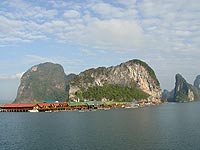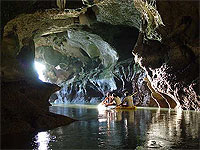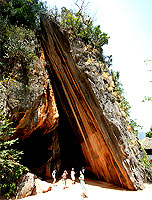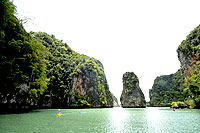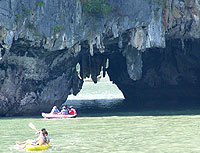Phang nga bay.
Phang Nga Bay is a 400 km² bay in the Andaman Sea between the island of Phuket and the mainland of the Malay peninsula of southern Thailand. Since 1981 a big part of the bay is protected as the Ao Phang Nga National Park. It is situated in Pang Nga Province, at 08°17'N 098°36'E.Limestone cliffs with caves, collapsed cave systems and archaeological sites are found about Phang Nga Bay. Some 10,000 years ago, when sea levels were lower, one could walk from Phuket and Krabi.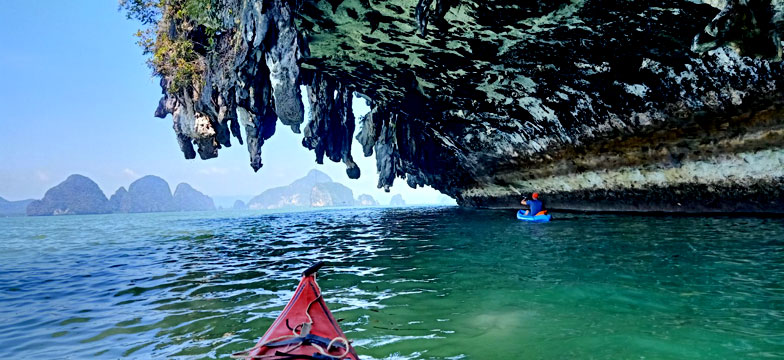
Pang Nga Bay Marine National Park was declared a protected Ramsar Site (no. 1185) of international ecological significance on 14 August, 2002. Pang Nga is a shallow bay with 42 islands, comprising shallow marine waters and intertidal forested wetlands, with at least 28 species of mangrove; seagrass beds and coral reefs are also present.At least 88 bird species, including the globally threatened Malaysian Plover (Charadrius peronii) and Asian Dowitcher (Limnodromus semipalmatus), can be found within the site, as well as 82 fish species, 18 reptiles, three amphibians, and 17 mammal species. These include the Dugong (a vulnerable species), White-hand Gibbon (Hylobates lar), the endangered Serow (Capricornis sumatraensis), shown here, and the Black Finless Porpoise (Neophocaena phocaenoides).A number of diverse cultures co-exist in local communities, which practice fishing, harvesting Nypa palm fronds for thatch, and catering to an international tourist presence drawn both by the natural beauties and by the archaeological sites, which have paintings more than a thousand years old.The most famous of the many islands in the bay is the so-called James Bond Island, a needle formed limestone rock in the sea, which featured in the movie The Man with the Golden Gun. Nearby villages include Ao Luk. Phang Nga Bay also is featured in the later James Bond movie Tomorrow Never Dies.
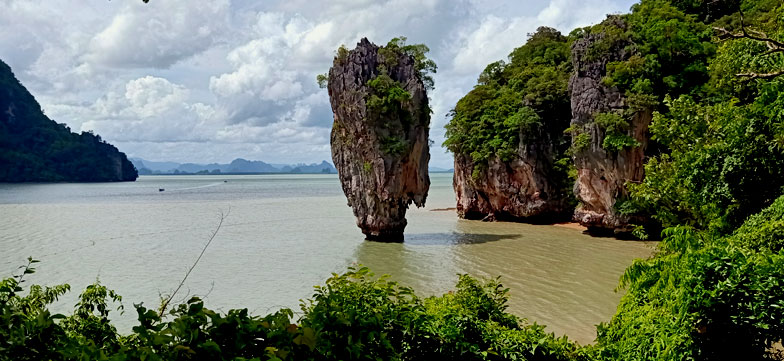
The most popular way to visit is a boat ride to various islands, which include:
|

